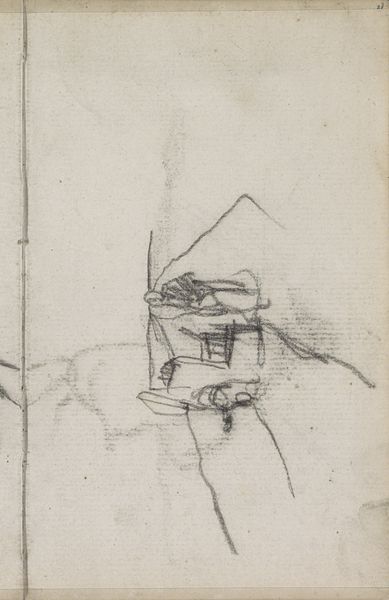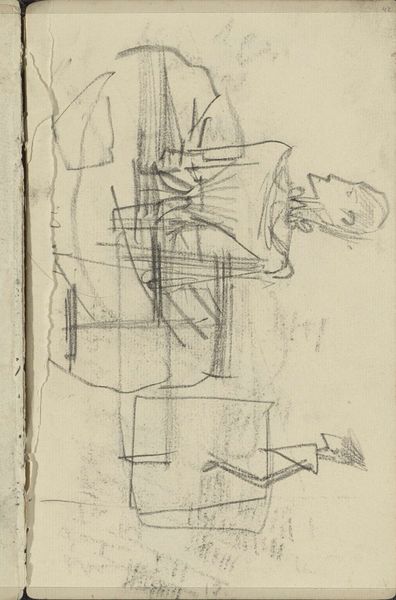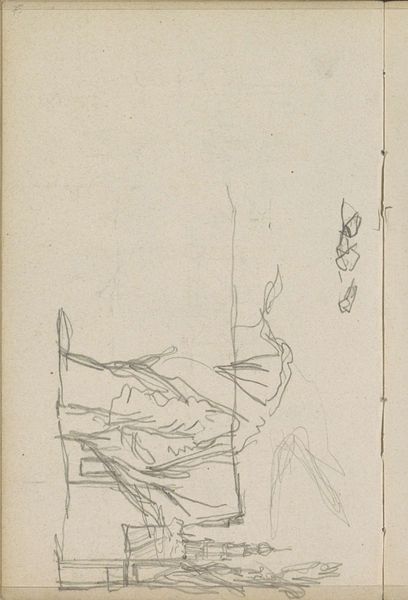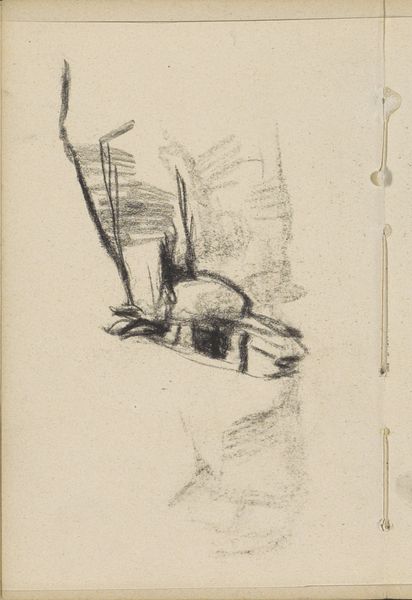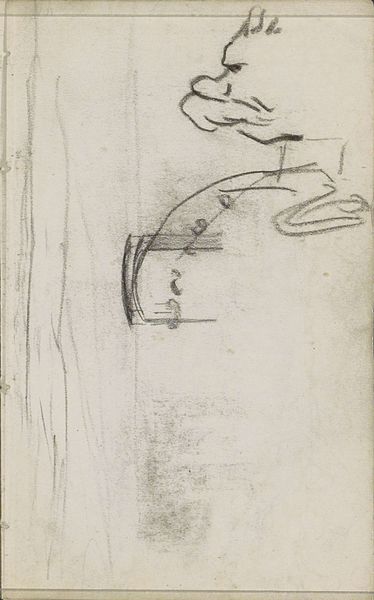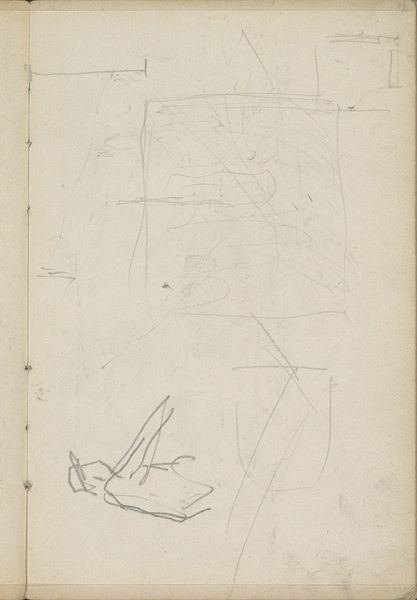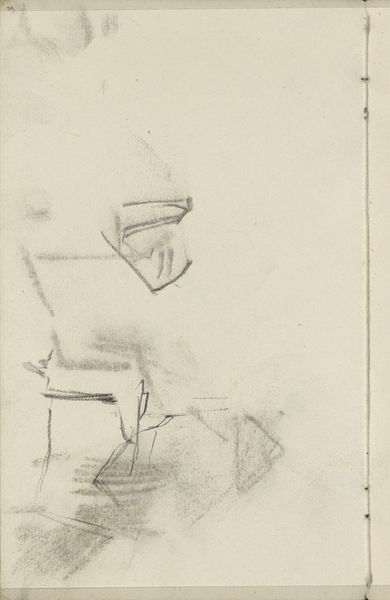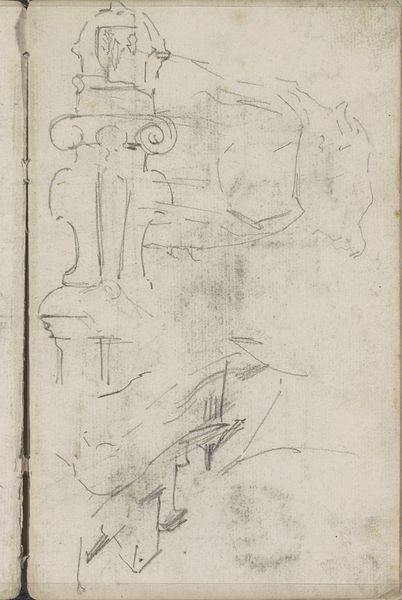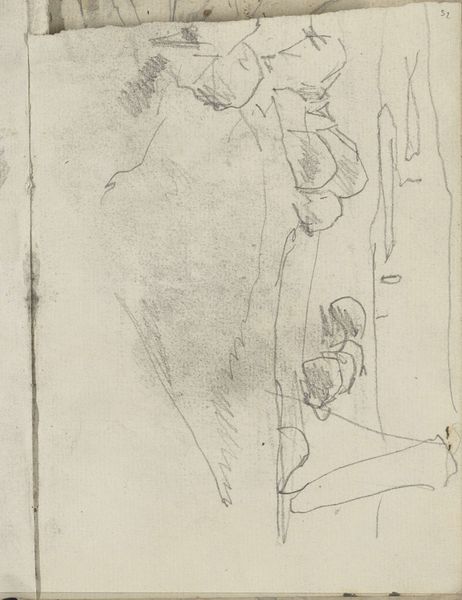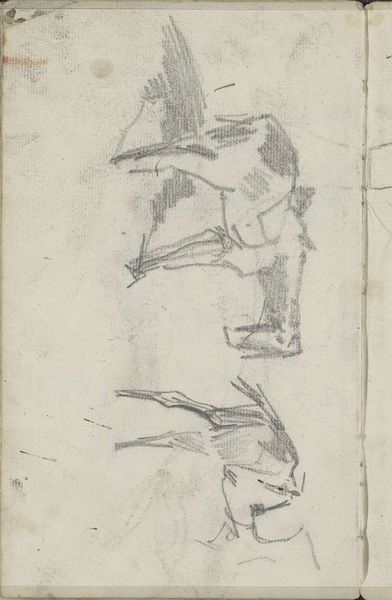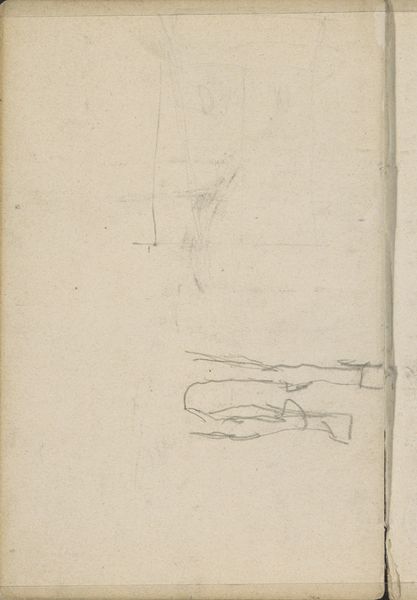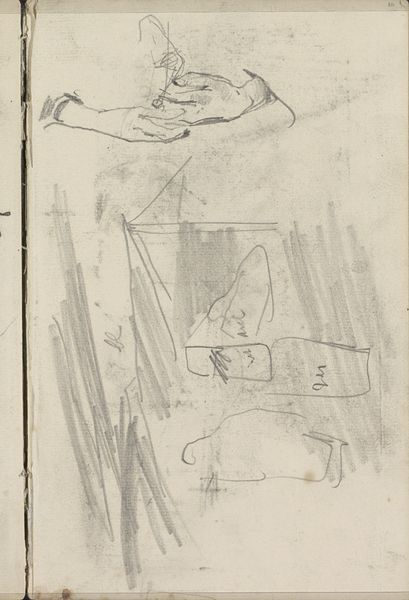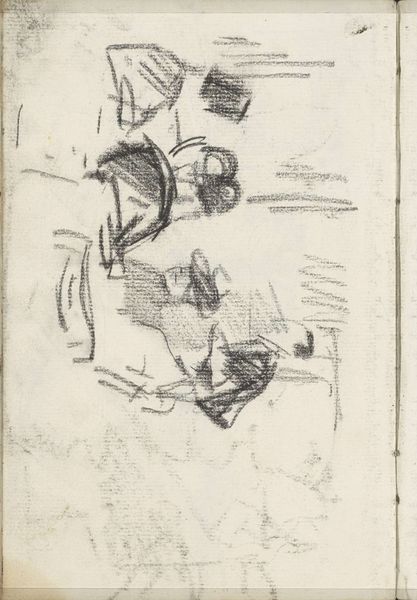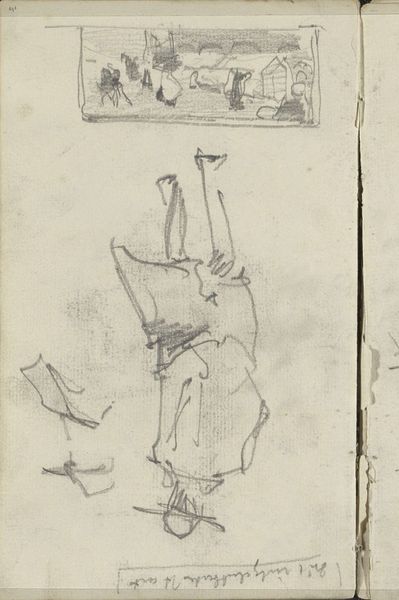
drawing, paper, pencil
#
drawing
#
impressionism
#
pencil sketch
#
landscape
#
figuration
#
paper
#
pencil
#
horse
Copyright: Rijks Museum: Open Domain
Editor: This is George Hendrik Breitner's "Ploeg met twee paarden," a pencil drawing on paper from between 1884 and 1886. It's quite a stark image, almost skeletal in its depiction of the horses. What social commentaries might be embedded within this sketch? Curator: I see it as a commentary on the often-unseen labour that underpins society. Breitner, known for documenting Amsterdam's working class, gives us a glimpse into the lives of those connected to the land, here the rural, perhaps struggling class. Editor: The sketch-like quality makes me think it's a fleeting moment captured, less about idealising rural life and more about its raw reality. Curator: Exactly. Breitner's impressionistic style does not offer a romanticised version of agricultural labor, as some might assume. The bareness and speed of execution mirrors, in my opinion, the precarity and hardship faced by many agricultural workers. Think about the political context of the time – the rise of industrialization, urbanization drawing populations away from farming – this could be a poignant reminder of a disappearing way of life. What feeling do you think that adds? Editor: It highlights a tension – this shift created by modernization left a significant class of laborers vulnerable and forgotten. I didn't consider the urban migration factor! Curator: The visual object of the horse is central. How are they being presented here? Editor: In service. Almost burdened. Curator: Consider the long history of equines representing a work ethic and their close relation to the farmer as a partner in labour. The drawing then represents the partnership of class struggle and social realities for not only man but animal as well. What does this drawing teach you about impressionism beyond pretty landscapes? Editor: I see now it is more than just light and atmosphere; it can also reflect underlying social structures and inequalities of the period. Curator: It serves as a great reflection tool. Thanks for digging in deep with me.
Comments
No comments
Be the first to comment and join the conversation on the ultimate creative platform.
